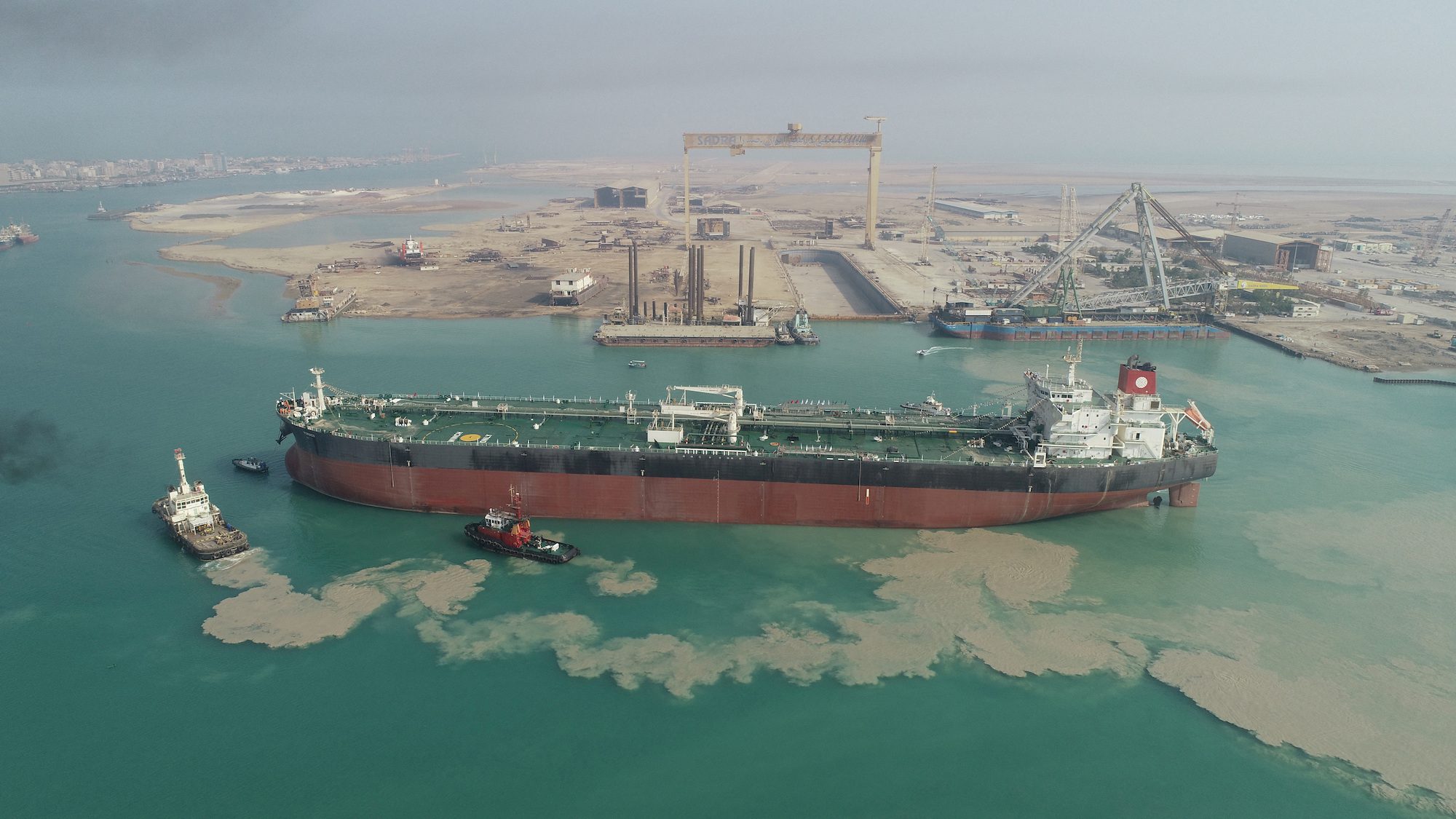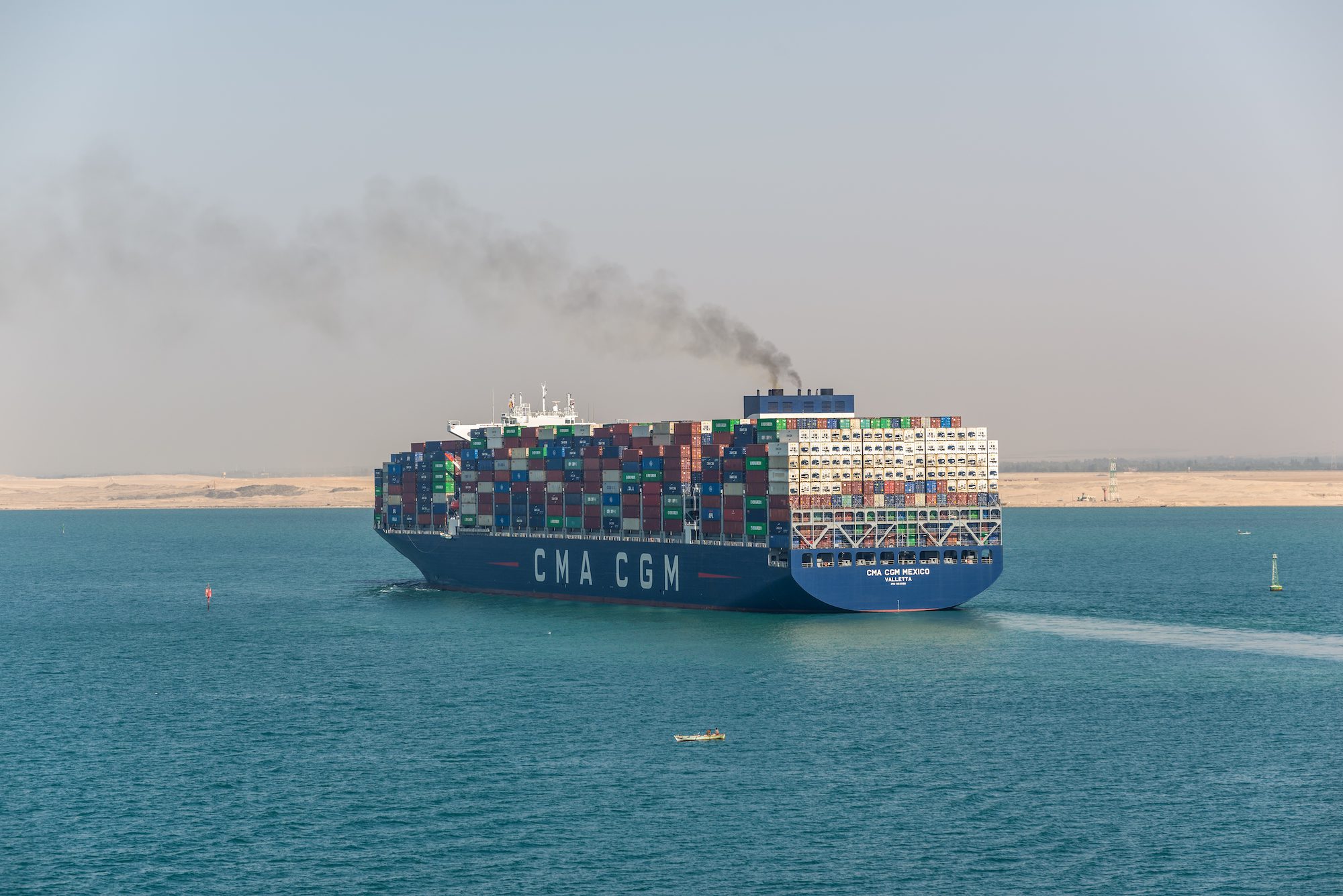By Julian Lee (Bloomberg) An oil terminal Iran built to bypass the vital strait of Hormuz appears to have partially filled with crude — offering Tehran a means to get a little of its oil into the world without using the waterway.
The Jask oil terminal — officially opened in July 2021 but largely inactive as a loading facility ever since — was about half filled late last month, an image from the Sentinel Hub website shows. By mid-October, another of its tanks also appeared to have been filled.
The terminal is important because Iran has threatened to close the strait of Hormuz multiple times down the years, something that could jeopardize its own flows as well as those of producers from across the Middle East. The waterway has become a focal point again recently because of tensions with Israel.
Around the time of the official opening back in 2021, two small tankers did appear to load, but the feat wasn’t repeated again until last month, according to satellite imagery reviewed by Bloomberg.
TankerTrackers.com Inc., which has spent years monitoring Iran’s oil shipments with the help of satellite imagery, spotted the 2021 test loadings and identified the two ships as the Aframax tankers Arnica and Artavil.
No Kharg
Still, even when up and running in full, Jask — located at the eastern end of the Strait of Hormuz but outside the Persian Gulf — isn’t about to supplant Kharg Island as the nation’s main oil outlet.
Plans indicated that the facility would have the capacity to load 1 million barrels a day of crude and the ability to hold 20 times that much in tanks, ready for shipment. But it seems well short of that, with just one of three planned loading buoys actually installed. Kharg Island has handled as much as three times that in the past.
The most recent loading at Jask, and the only one in the past three years, took place from Sept. 9 to 19. The vessel was identified by TankerTrackers.com as the Iranian-owned supertanker Dune, capable of carrying about 2 million barrels of crude. The monitoring company confirmed that it had also seen no other cargoes loaded from Jask since 2021.
The Dune briefly appeared on digital tracking systems between Oct. 10 and 11, passing Singapore with a draft indicating that it was full.
While Jask may still be largely idle in terms of loadings, the same is not true for Kharg Island.
The terminal, at the northern end of the Persian Gulf, has been the most important outlet for Iran’s crude exports since the 1960s.
Located near the country’s main oil fields, it’s host to more than 50 storage tanks and loading jetties with berths for as many as 10 tankers, theoretically meaning it could move as much as 5.5 million barrels a day.
It accounts for about 90% of Iran’s crude exports and has continued shipping out oil even after empty tankers fled its anchorage in the days after Tehran launched a missile salvo toward Israel.
By Julian Lee © 2024 Bloomberg L.P.

 Join The Club
Join The Club











